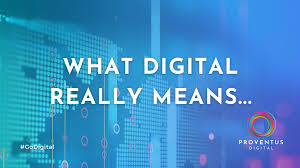The Role of a Designer in Today’s Digital Age
Designers play a crucial role in shaping the visual and interactive experiences we encounter in our daily lives. From websites to mobile apps, from product packaging to advertising campaigns, designers are responsible for creating engaging and user-friendly designs that captivate audiences and drive results.
One of the key responsibilities of a designer is to understand the needs and preferences of their target audience. By conducting research, gathering insights, and staying up-to-date with design trends, designers can create solutions that resonate with users and meet their expectations.
Designers also collaborate closely with other professionals, such as developers, marketers, and project managers, to bring their ideas to life. By working together as a team, designers can ensure that their designs are not only visually appealing but also technically feasible and strategically aligned with business goals.
In today’s digital age, where attention spans are short and competition is fierce, designers must constantly push the boundaries of creativity and innovation. They need to experiment with new tools and techniques, embrace emerging technologies, and adapt to changing consumer behaviors to stay ahead of the curve.
Ultimately, the work of a designer goes beyond creating beautiful visuals—it’s about crafting meaningful experiences that resonate with users on a deeper level. Whether it’s simplifying complex information, evoking emotions through color and typography, or guiding users through intuitive interfaces, designers have the power to shape how we perceive and interact with the world around us.
So next time you visit a website, use a mobile app, or admire a well-designed product, take a moment to appreciate the thought and effort that went into creating that experience. Behind every great design is a talented designer who is passionate about making the world a more beautiful and user-friendly place.
Understanding the Role and Path of a Designer: FAQs on Skills, Tools, and Creativity
- What does a designer do?
- How do I become a designer?
- What skills are needed to be a successful designer?
- What tools do designers use?
- How important is creativity in the field of design?
What does a designer do?
A designer is a creative professional who combines artistic skills with technical expertise to visually communicate ideas and solve problems across various mediums. Designers work on a wide range of projects, such as creating logos, designing websites, developing product packaging, and crafting marketing materials. They collaborate with clients to understand their needs and objectives, conduct research to gather insights, and use design principles to create visually appealing and functional solutions. Whether it’s shaping user experiences through intuitive interfaces or conveying brand messages through compelling visuals, designers play a pivotal role in bringing ideas to life and engaging audiences in meaningful ways.
How do I become a designer?
To become a designer, one typically needs a combination of education, skills, and experience. Many designers start by pursuing a degree in graphic design, web design, or a related field to build a strong foundation in design principles and techniques. Additionally, gaining practical experience through internships or freelance projects can help aspiring designers hone their skills and build a portfolio. It’s also important to stay updated on the latest design trends and tools, as the field of design is constantly evolving. Networking with other professionals in the industry and seeking mentorship can provide valuable insights and opportunities for growth. Ultimately, becoming a successful designer requires dedication, creativity, continuous learning, and a passion for creating visually compelling and user-friendly designs.
What skills are needed to be a successful designer?
To be a successful designer, a diverse set of skills is essential. Creativity is at the core of design, allowing designers to think outside the box and come up with innovative solutions. Strong visual communication skills, including an eye for aesthetics and attention to detail, are crucial in conveying messages effectively through design. Technical proficiency in design software and tools is also necessary to bring concepts to life. Additionally, good problem-solving abilities, time management skills, and the ability to collaborate effectively with team members and clients are key for success in the dynamic and fast-paced field of design. Adaptability to new technologies and trends, along with a continuous drive for learning and improvement, are qualities that can help designers thrive in today’s competitive landscape.
What tools do designers use?
Designers use a variety of tools to bring their creative visions to life. From industry-standard software like Adobe Creative Suite (including Photoshop, Illustrator, and InDesign) for graphic design and layout work, to prototyping tools such as Sketch or Adobe XD for creating interactive mockups and wireframes, designers rely on a diverse toolkit to execute their ideas efficiently. Additionally, tools like Figma for collaborative design projects, Canva for quick graphic design tasks, and digital asset management platforms like Dropbox or Google Drive for file organization play a crucial role in the day-to-day workflow of designers. By leveraging these tools effectively, designers can streamline their processes and deliver high-quality designs that meet the needs of their clients and users.
How important is creativity in the field of design?
Creativity is paramount in the field of design as it serves as the driving force behind innovation and differentiation. Designers rely on their creative abilities to conceptualize unique solutions, think outside the box, and craft compelling visuals that resonate with audiences. Creativity allows designers to break free from conventional norms, experiment with new ideas, and push boundaries to deliver fresh and engaging designs. In a competitive landscape where standing out is key, creativity not only sets designers apart but also enables them to solve complex problems creatively and effectively. Ultimately, creativity fuels inspiration, fuels progress, and plays a pivotal role in shaping impactful and memorable designs that leave a lasting impression.




